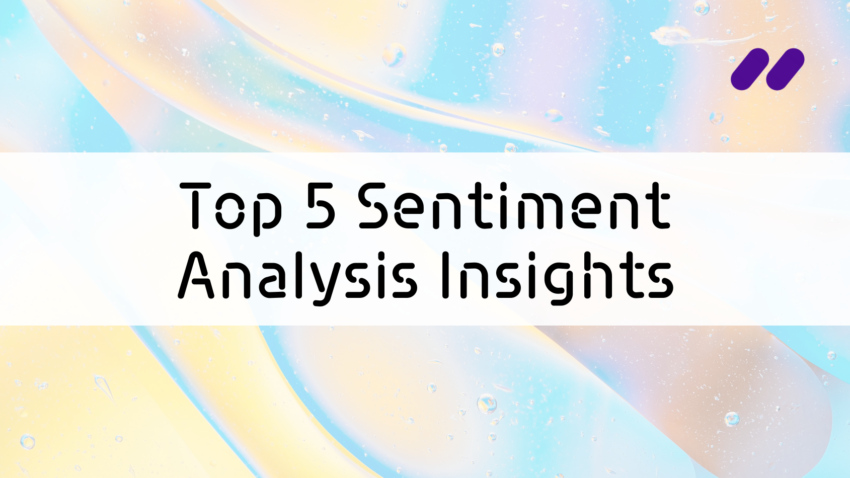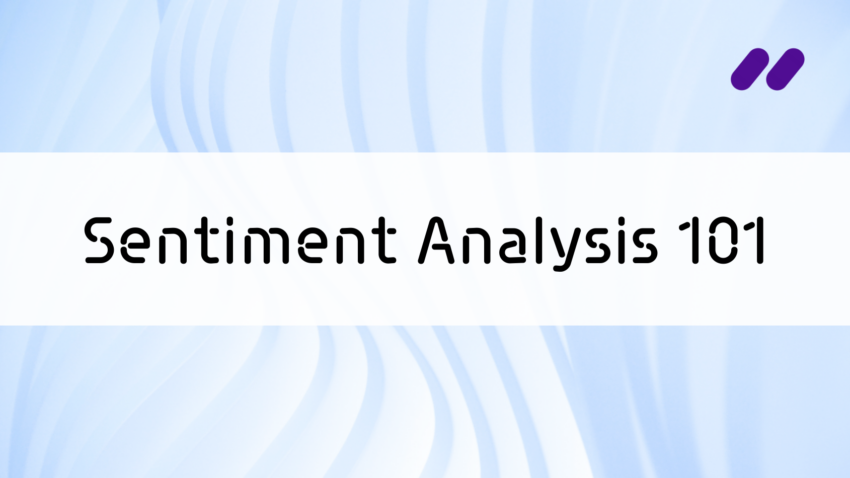Customer interaction through digital channels has skyrocketed as a result of the COVID-19 pandemic, to the point where it is now one of the most critical areas for businesses to keep tabs on. Today, customers rely on these digital channels not only to give their own feedback about their experience with a brand, but also to understand the experiences of others and make purchase decisions based on this information.
Customer experience is the core of brand success, and it is no longer practical in 2022 to think about customer experience without text analytics.
Learning from customers is now mission-critical for brands – and the best way to learn from customers is through sentiment analysis. In this article, we’ll talk about what sentiment analysis does, why you need it, and what you can really get out of it.
Jump to a section:
- What does AI-powered sentiment analysis do?
- Why use sentiment analysis?
- Top 5 insights you can learn from sentiment analysis
1. What does AI-powered sentiment analysis do?
Your teams can spend countless hours analyzing customer interactions like reviews, surveys, and support tickets to determine how your customers feel about your brand and its products and services.
Chances are, you’ll end up with a general idea of how your customers feel, if it’s negative or positive. But your takeaways will be limited: from a small sample size, from human bias, or from data silos that make it difficult to see trends and patterns emerging.
Instead, state of the art sentiment analysis uses text analysis to quickly, accurately, and automatically put data-driven insights in your hands. The easiest way to scale your sentiment analysis initiatives is through AI. Modern AI-based sentiment analysis tools can:
- Process text feedback at massive scales
- Identify trends across the entire customer journey
- Provide recommendations with the most impact on CSAT and NPS
2. Why use sentiment analysis?
Sentiment analysis unlocks the ability to quantitatively understand your customer experience at scale, across the entire customer journey. This is a foundational component of a strong voice of customer program. Once you have customer data that your team just can’t read through manually (think thousands of reviews or survey responses), automating the analysis is the most efficient and accurate way to get customer insights.
If these scenarios apply to you, a sentiment analysis solution is probably the way to go:
- You need to work with a large amount of data at scale: No matter how great your team is, no one can sort through thousands of surveys, reviews, chats, and support tickets manually. Sentiment analysis does this automatically in a matter of minutes.
- You need a consistent analysis throughout: Sentiment can be pretty subjective. If you ask each of your team members to individually read through the same set of customer comments, they’ll likely come up with different results. Instead, AI-powered sentiment analysis uses a consistent system to handle all comments equally.
- You need to analyze information in real-time: Sentiment analysis solutions that integrate with your tech stack can import new data as it comes in. Otherwise, you’re left to constantly export and upload data whenever you want to perform a new analysis!
Learn more about sentiment analysis
3. Top 5 insights you can learn from sentiment analysis
Sentiment analysis can uncover key insights about your customers. So, what are they?
As you can imagine, the core of this analysis is “sentiment” – how customers feel, what they’re thinking about, and how you can improve their experience. From a more concrete standpoint, this looks like:
- Topics: Sentiment analysis can identify the main themes that are coming up in your data – like product quality, shipping, customer service, pricing, and so on. You can get pretty granular by analyzing sentiment for each topic to prioritize where you should focus your efforts. Often times, a single customer comment will cover many topics at once.
- Intent: Going beyond simple polarity (positive or negative), sentiment analysis can uncover where customers are asking questions or even giving suggestions. Looking at intent can provide more qualitative context behind customer comments.
- Emotion: Of course, this is the bread and butter of sentiment analysis. What are your customers feeling in their interactions with your brand? Delight, frustration, excitement, anger? NLP does the heavy lifting here to identify and categorize customer sentiment.
- Root Cause: When customers are having issues, sentiment analysis can get to the root cause, a powerful outcome for any company. Details like at which stage of the customer journey a problem occurs enable you to take action to resolve it quickly and efficiently.
- Sentiment Score: This is a pretty common metric designed to benchmark the general sentiment for analyzed text data. Drawing correlations between trends in the sentiment score and business decisions, new product offerings, or other milestones can indicate how customers felt about a specific product, service, or experience.
Subscribe to the Keatext blog for more insights in your inbox
What insights can you gain from Keatext?
It won’t be a surprise that topics, intent, emotion, root causes, and sentiment score are all part of the suite of insights that you can get with Keatext. But our advanced analytics go beyond the basic insights to really provide business value for your organization.
- Advanced intent analysis: Keatext’s powerful intent analysis identifies praises, problems, questions, and suggestions from customers, so you can really see what customers are feeling. While polarity insights (positive and negative feedback) are certainly useful, what are customers asking for, or even telling you to do in order to improve a product, service, or experience?
- Recommendations for top action items: You can also get powerful recommendations from your data with our platform. Keatext uses predictive analytics to bring together your qualitative customer feedback with the associated CSAT or NPS score to identify areas that have the most impact on customer satisfaction. Leveraging these focus recommendations enables your company to take the most impactful action to improve customer experience.
- Sentiment score: On your Keatext dashboard, it’s easy to add a sentiment score widget to see the overall sentiment in your data. The benefit of this is that with our advanced dashboard filtering, you can see the score from a 360 perspective or get as granular as you want for a specific customer segment, topic, etc. Plus, you can monitor changes in the score over time to spot trends and how they match up with business decisions you’ve made.


